Luna Moths Bring New Beginnings
“Look everybody! It’s a luna moth!” Rowan’s enthusiasm for any insect on the planet always keeps us on our toes, but today’s discovery has everyone jumping for joy.
When May rolls around, we are often blessed with the arrival of a luna moth on our classroom’s backdoor screen. Upon landing, the luna moth clings to the screen, affording us hours of enjoyment as we get a close-up look at this lovely winged creature.
Luna moths are nocturnal. Like many moths, they are attracted to light, which is why they are often found on screen doors beneath porch lights. Luna moths are easy to identify by their white bodies, long pinkish legs and large, translucent lime-green wings.
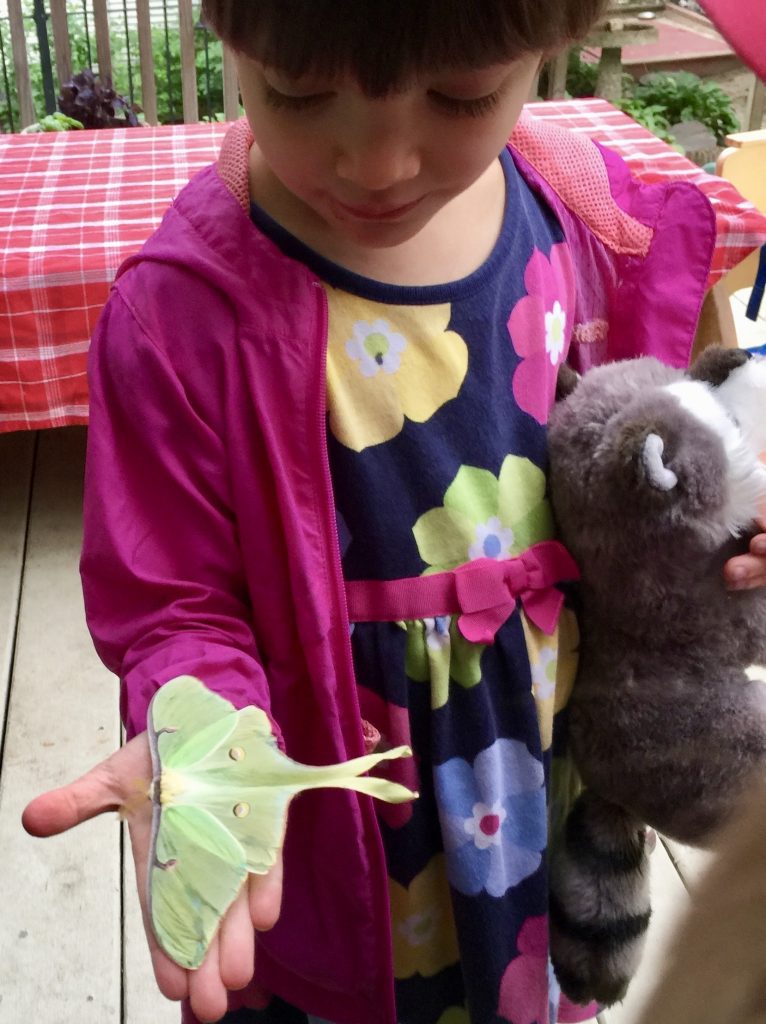
Our back door gets a lot of use, so whenever I find a luna moth clinging to the screen, I joke that there are much more peaceful places for this winged creature to stop and rest awhile. But I am always thankful that Mother Nature has blessed us with this learning opportunity.
Today’s luna moth discovery has set our curriculum in motion, with Rowan as our guide. “See those big, beautiful eyespots and that long tail?” she asks. “Those eyespots will trick predators into believing the moth is bigger than it really is.”
When Rowan asks if we can measure the luna moth’s wingspan, we carefully measure the width of its wings. Four-and-a-half inches—almost five!
“Will it bite me?” asks four-year-old Parker.
“No,” laughs Rowan. “It doesn’t have teeth. It doesn’t even have a mouth! This luna moth will only live for seven days. It doesn’t drink or eat. It is only alive to make new baby moths.”
This is pure preschool science—and the children love it! The rest of our day will be spent discussing luna caterpillars as Rowan continues to educate us. At nap time, we will bring out photos of other luna moths, as well as books. Our favorite book at the moment—Beauty the Luna by Julia Welch and Jymann Merritt—is a beautifully illustrated story about the life cycle of the luna moth.
In the coming weeks, we’ll be on the lookout for the luna moth’s eggs: tiny white ovals attached to leaves with a sticky brown adhesive coating.
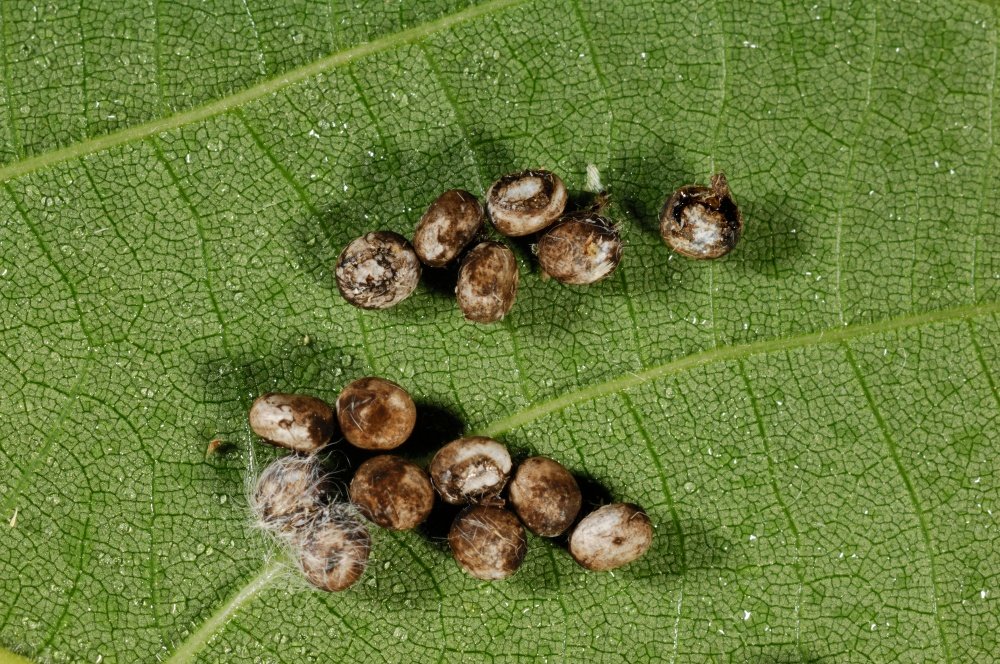
We’ll also be keeping an eye out for luna moth caterpillars (below).

Rowan’s love of insects is likely due to the influence of her mother, an associate professor of biology who studies insects. Lucky us! We have our own entomologist just a text message away!
Rowan’s mother observes our luna moth over the course of the week and alerts us when the moth is nearing the end of its life cycle. She gently removes the moth from the screen door and guides our young learners through a close-up investigation of the moth’s anatomy.
We count legs, antennae and eyespots. We observe the luna’s markings and compare them to different shapes we’ve learned about. Each child has a chance to hold or touch the luna moth before Rowan’s mother encourages the moth to fly to a more peaceful haven for its final hours.
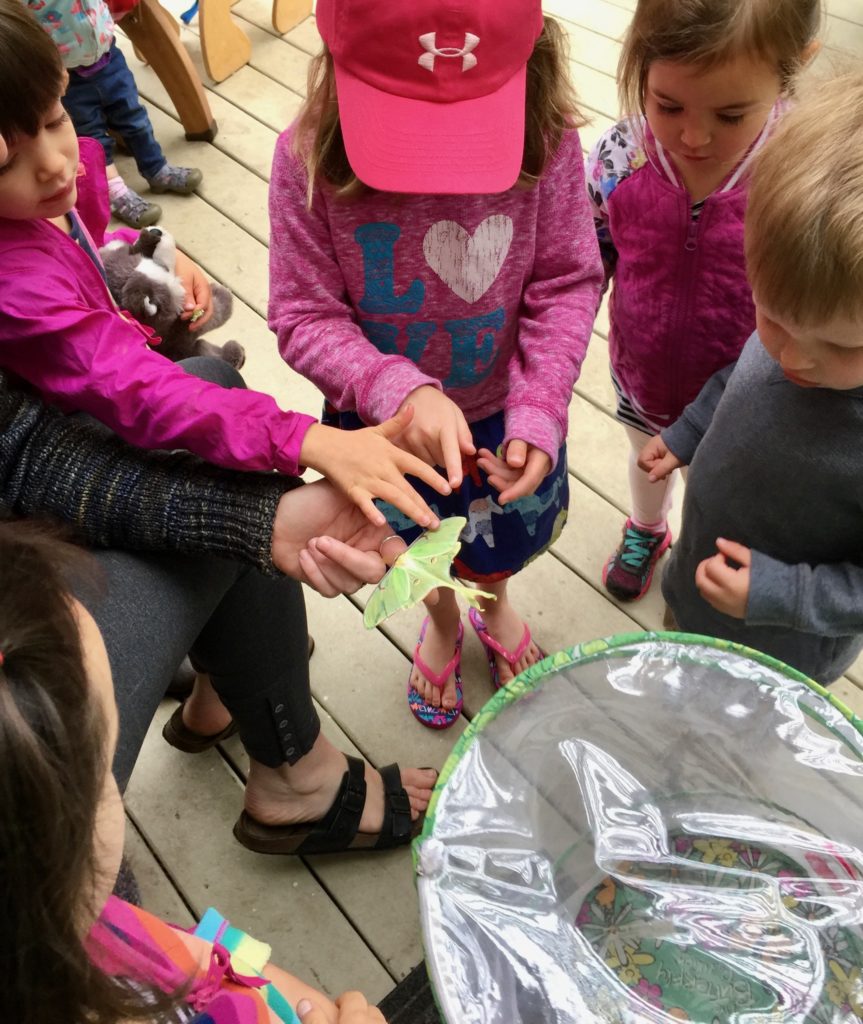
Last September, we received an email that a graduate of our program (second from right in the photo above) had found a luna moth caterpillar and created a habitat for it with a repurposed Ikea clothes hamper.
As the luna moth caterpillar munched on a meal of walnut, hickory and birch leaves, this junior entomologist told her family that, when threatened by a predator, the caterpillar would rear up on its hind legs and make a clicking sound before puking out a bad-tasting liquid. (We often find that the grossest facts are the most likely to be retained by little brains.)
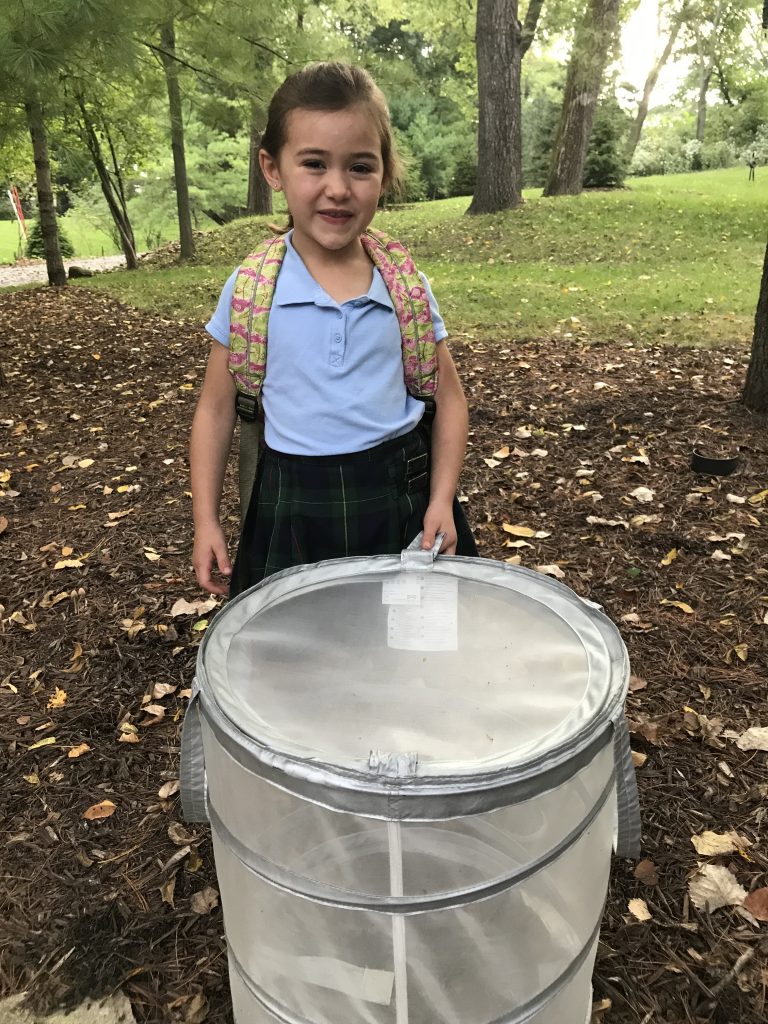
Within days, the caterpillar had spun a cocoon inside the hamper. Leaves and small branches are often woven into luna moth cocoons to camouflage the cocoon and protect the vulnerable larvae as they metamorphose into moths.
This particular luna moth caterpillar spun its cocoon on the underside of the tag in the hamper below!
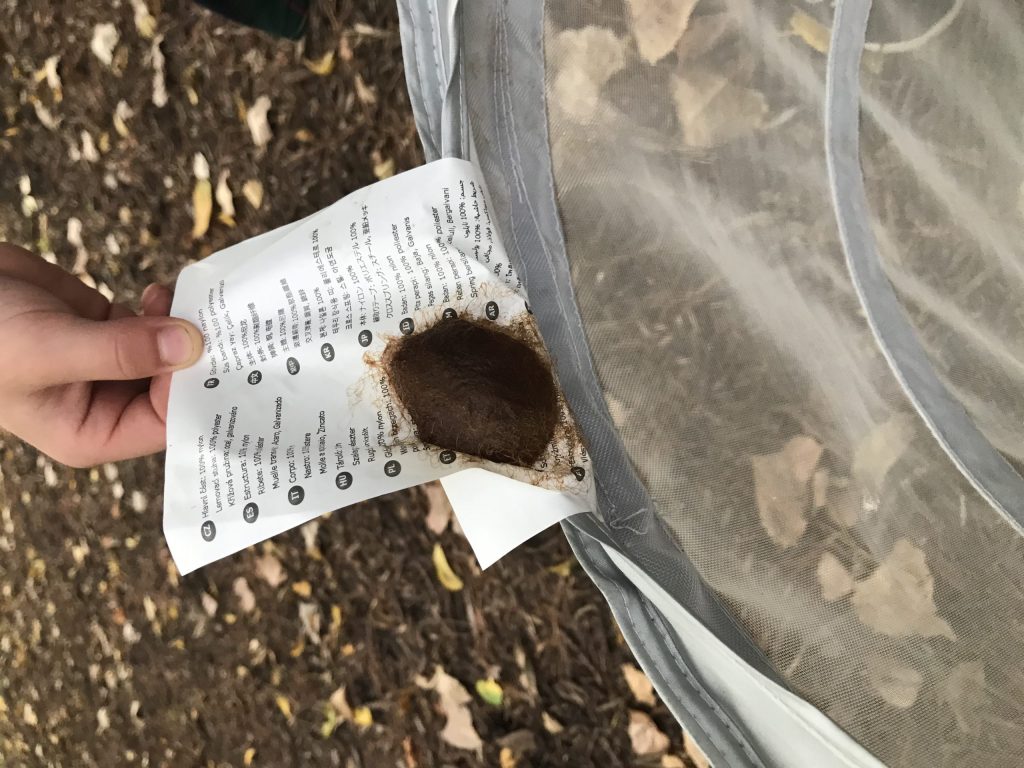
Then the waiting began. Caterpillars who cocoon early in the season generally emerge as moths after three weeks, but many weeks passed without a metamorphosis. The hamper was put away for the winter and the family assumed that their luna caterpillar had died.
When spring arrived, the family pulled the outdoor play items out of storage and returned them to the yard (including the hamper—cocoon and all).
On May 20, a full eight months after the caterpillar had spun its cocoon, a luna moth emerged! What happened? It turns out that, if the caterpillar spins itself up in a silken cocoon in late autumn, it “overwinters” and does not emerge until spring.
Opportunities like these may crawl or fly into your classroom on any given day. This is one of the great joys of early childhood education. When STEM opportunities arise, put your planned curriculum on hold and take advantage of the rich learning environments that are literally right outside your door. Incorporate math into the learning experience as you introduce concepts such as size, shape, probability and data collection. Tap into technology for a wee bit of research. Kids LOVE facts that they can retain and share with others. Meet your early learning standards for science when you add topics such as weather, seasons, earth science and life science.
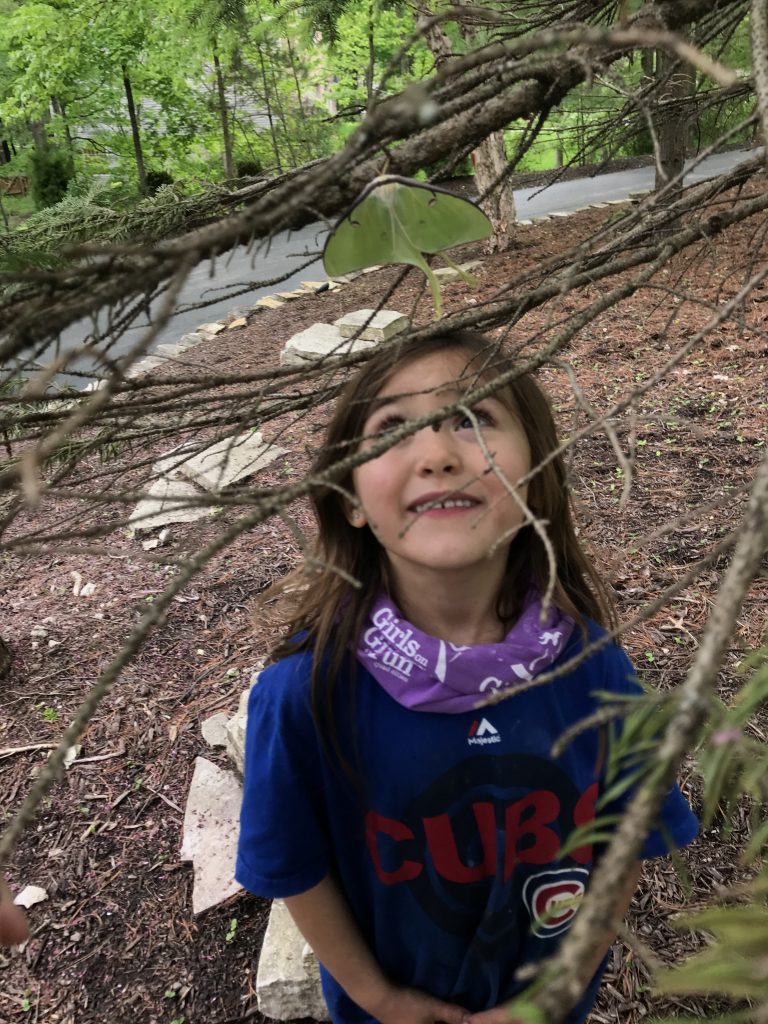
Sightings of luna moths signify new beginnings. But there is a bittersweet symbolism in the arrival of these magical creatures in May, just as our oldest students are about to leave us and move on to kindergarten in the fall.
Nonetheless, the arrival of a luna moth brings endless opportunities for STEM investigation and exploration. Keep your eyes peeled for this magical creature during the month of May, and let the learning begin!
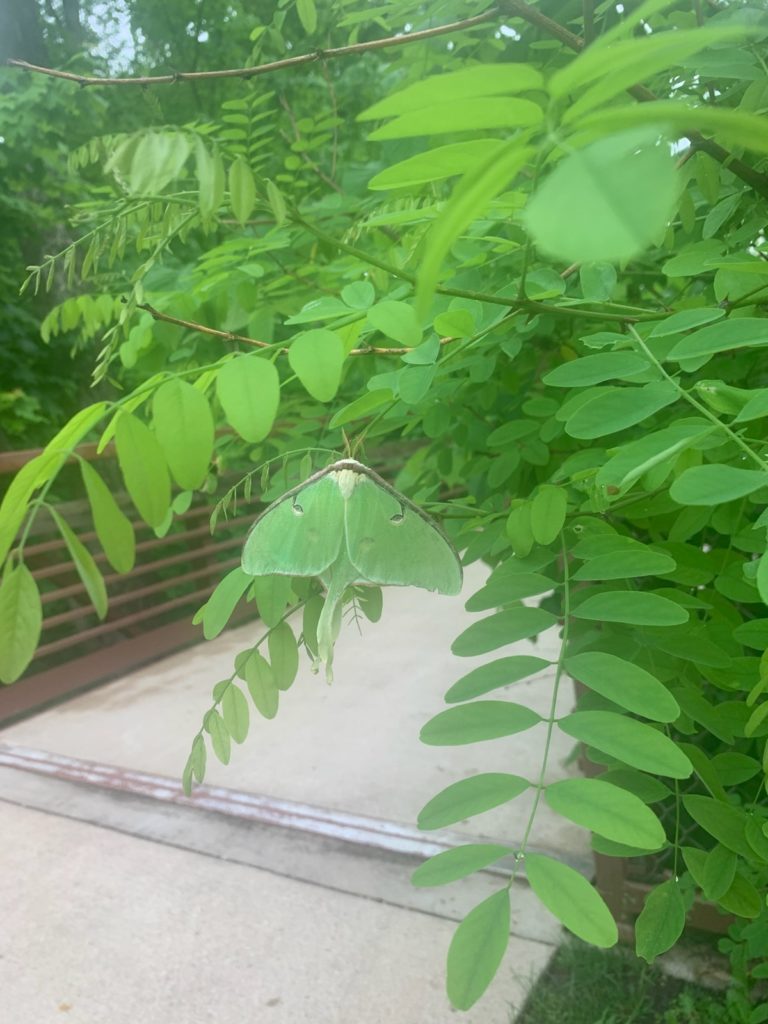
This is a great lesson for children to get started in recognizing data and learning nature.